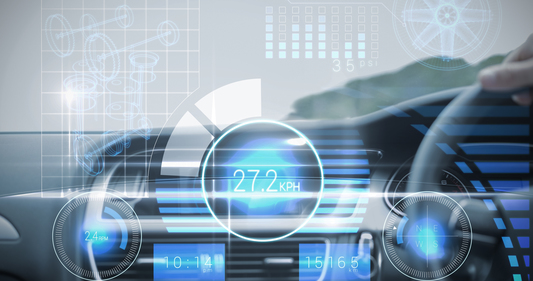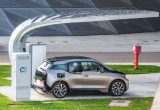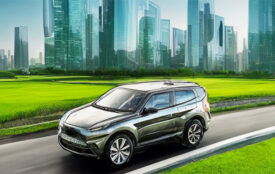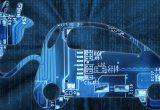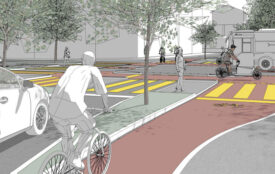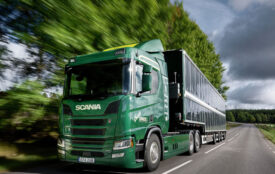Driverless Cars Won’t Save Us
In fact, they’ll do the opposite of what techno-optimists hope, and worsen—not ease—inequality.
For a growing chorus of techno-optimists and even urbanists, driverless cars are the solution to everything from traffic congestion to high housing prices. By providing an easy, flexible, hands-free commute, during which people can watch videos, talk, or get work done, they will stretch the current boundaries of our crowded metro areas, and enable more and more people, especially the affluent and the advantaged, to live in far-off suburbs and exurbs.
To this way of thinking, driverless cars are the most recent in a long line of technologies—from the horse-drawn carriage and the streetcar to subways, trains, and the automobile itself—that have allowed us to escape the clutches of geography and the constraints of distance.
But the reality of driverless cars is likely to be rather different.
The vision of millions of workers logging hours from their comfortable offices on wheels can be intoxicating. And, yes, it is true that the desire to avoid long commutes is one of the things that has sent affluent Americans streaming back to cities over the past decade and a half. But a driverless car is still a car. A growing number of metro regions, including the Bay Area, Washington, D.C., Philadelphia, Boston, Dallas, Houston, Miami, Atlanta, and Toronto, have now reached the physical point where the car is no longer an effective technology for moving people long distances. This is a limit that the new technology will not overcome.
The basic law of traffic congestion is that as more new roads get built, they quickly fill up with more cars, and congestion remains. Although you won’t be driving them yourself, driverless cars won’t be able to overcome the reality of congested roads, occasional accidents, and unpredictable commutes. Higher-income people who want to avoid such commutes will continue to use their money to avoid them by living closer to the urban center.
- We’ve seen endless predictions about how new transportation technology would lead to the death of distance. Every one of them has been wrong.
While cutting down on long commutes has mattered to the back-to-the-city movement, this is not the only factor—and not the most important one—that has shaped the return of advantaged people to the urban center. Two other factors have mattered as much, or more.
For one, knowledge workers have flocked back to cities because that is where the best, highest-paying professional, tech, and creative jobs are, and where their dense professional networks occur. On top of this, people have been drawn to the unique amenities—museums, art galleries, restaurants, theaters, nightlife, and much, much more—that cities offer. In fact, according to several econometric studies, dense concentrations of these amenities are a motivating factor in the back-to-the-city movement of the affluent and the educated. Driverless cars will do little to change either of these factors.
Trulia’s chief economist Ralph McLaughlin rightly argues that driverless cars will accentuate geographic inequality. But he sees this happening as both affluent people and businesses are able to locate farther and farther out in the green exurban fringe, while urban centers lose their current value and allure, and once again become home to less advantaged groups.
I fully agree that driverless cars will exacerbate spatial inequality. But I see it occurring in almost exactly the opposite way.
Driverless cars will do little to alter the basic factors and forces that have brought affluent people back to cities. What they will do instead is free up space on the urban periphery to house less advantaged groups and classes there. Driverless cars will open up cheap outer-edge land for low-cost development and make today’s “drive ’til you qualify” commutes look like a breeze. Rather than being used by a re-suburbanizing rich headed to far-flung luxury developments, driverless cars—or more likely, driverless busses—will extend the commuting range of blue-collar workers, service workers, and the poor. America’s metropolitan geography will come to look more like that of Europe or the developing world, with the rich clustered on the increasingly valuable land in and around the city center, and the low-income warehoused in the much cheaper land at the suburban and exurban fringe.
Over the past several decades, we’ve seen endless predictions about how new transportation, information, or communications technology would lead to the death of distance—the end of geography and the flattening of the world. And every one of them has been wrong. The world has become spikier. Superstar cities have become more prosperous. And the affluent have used their resources to colonize the most economically functional and amenity-rich areas near the urban center.
Driverless cars will do nothing to change that. In fact, they are only likely to make our current geographic divides even worse.
Source
CITYLAB 2017 | Richard Florida is a co-founder and editor at large of CityLab and a senior editor at The Atlantic. He
is a University Professor and Director of Cities at the University of
Toronto’s Martin Prosperity Institute, and a Distinguished Fellow at New
York University’s Schack Institute of Real Estate.
